Ruddington - Rushcliffe
Country Park
w/e 05 November 2006
All
this week's pictures were taken with a Kodak DX6490
The mild weather of recent weeks seems to have confused
the trees locally as many are still in the summer finery despite
the fact that we are now into November. A fleeting visit to Shipley
Country Park with the intention of capturing some autumnal images
proved fruitless so I thought I'd wait awhile and try my luck
elsewhere.
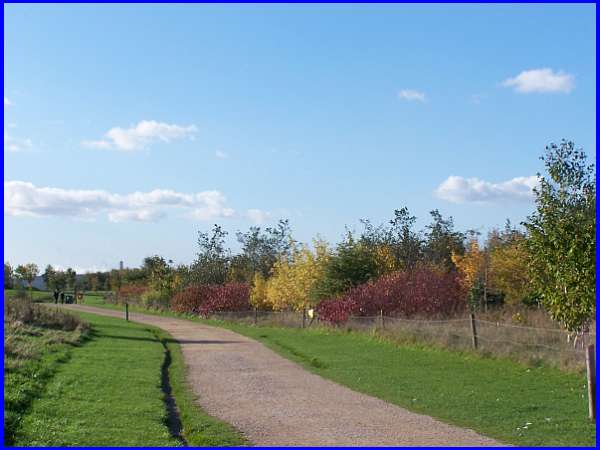
That "elsewhere" turned out to be Rushcliffe Country
Park at Ruddington, just to the south of Nottingham and although
I did find some colour (see above), generally speaking it was
the same story here too. Rushcliffe Country Park covers 210 acres
but is a relatively new development on the site of a former Ministry
of Defence Depot used for storing decommissioned weapons and
is not nearly as mature as its counterpart at Shipley.
|
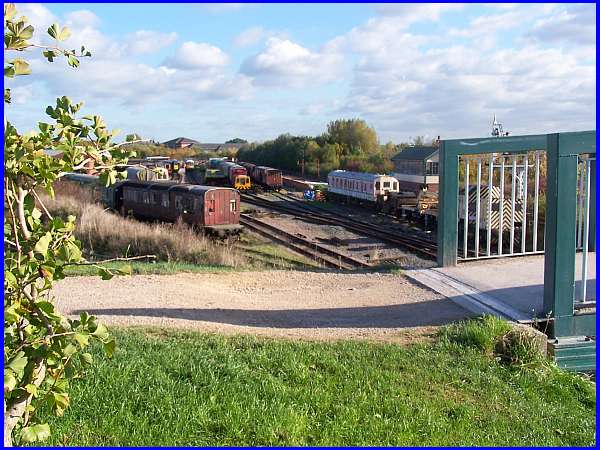
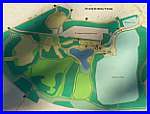 The park is
adjacent to a large Business Park and alongside the Nottinghamshire
Heritage Centre which is home to a collection of steam trains
and classic buses. In fact the railway line runs through the
park and splits it into two with a smaller area being to the
north and a much larger area to the south of the line. A bridge
over the line, the northern end being seen in the image above,
connects the two parts. The design and reclamation of the former
MOD site was completed by Nottinghamshire County Council in 1993,
but since then, it has come under the jurisdiction of, and been
managed by, Rushcliffe Borough Council. The park is
adjacent to a large Business Park and alongside the Nottinghamshire
Heritage Centre which is home to a collection of steam trains
and classic buses. In fact the railway line runs through the
park and splits it into two with a smaller area being to the
north and a much larger area to the south of the line. A bridge
over the line, the northern end being seen in the image above,
connects the two parts. The design and reclamation of the former
MOD site was completed by Nottinghamshire County Council in 1993,
but since then, it has come under the jurisdiction of, and been
managed by, Rushcliffe Borough Council.
|
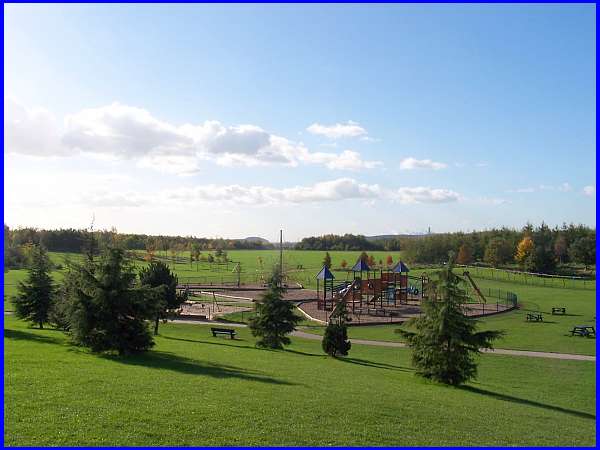
From the other end of the railway bridge, the view to the south
west is over an extensive play area for children which has about
twenty pieces of equipment for their entertainment and enjoyment.
This play complex together with a skate park further over to
the left and the picnic area cost over £180,000 to build
but it is well used by the local populace. The tall chimney that
can be seen on the horizon is at Ratcliffe On Soar Power Station
and from the same direction, aircraft could be seen flying to
and from the nearby airport at Castle Donington.
|
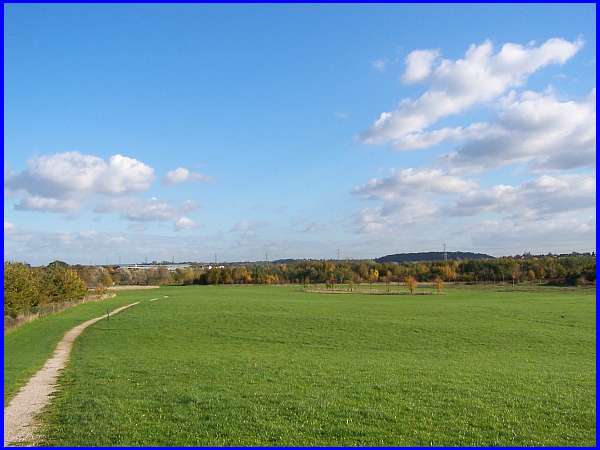
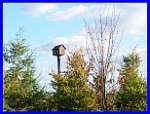 To the south
of the play complex, the land rises slightly to the highest point
in the park at Foamer Hill. Although there are over eight kilometres
of paths through the park there are also many areas that are
fenced to protect the newly planted trees as they grow towards
maturity. On Foamer Hill a plantation (above left) of alder and
birch trees provide protection for slower growing beech, oak
and ash. A number of barn owl boxes that also attract little
owls and kestrels have been erected in the park and this one
pictured right is in the Foamer Hill plantation. Descending the
hill the grassy area seen ahead and to the right in the main
picture above is known as the Burning Ground. This is because
during the Second World War, waste materials were burned here.
Discarded cordite and magnesium were mixed with the waste and
produced huge flares. After the war the area, tarmac covered,
became a storage place for surplus military vehicles. To the south
of the play complex, the land rises slightly to the highest point
in the park at Foamer Hill. Although there are over eight kilometres
of paths through the park there are also many areas that are
fenced to protect the newly planted trees as they grow towards
maturity. On Foamer Hill a plantation (above left) of alder and
birch trees provide protection for slower growing beech, oak
and ash. A number of barn owl boxes that also attract little
owls and kestrels have been erected in the park and this one
pictured right is in the Foamer Hill plantation. Descending the
hill the grassy area seen ahead and to the right in the main
picture above is known as the Burning Ground. This is because
during the Second World War, waste materials were burned here.
Discarded cordite and magnesium were mixed with the waste and
produced huge flares. After the war the area, tarmac covered,
became a storage place for surplus military vehicles.
|
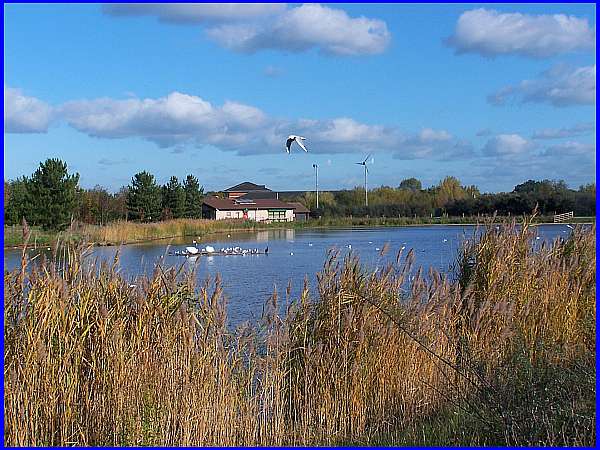
A large lake has been created in the park which is popular with
wildfowl and humans alike. Refreshments are available at the
Heritage Centre and also at the kiosk opposite at various times
depending on the availability of volunteers. Also opposite is
the Environmental Education Centre which, true to its name, is
powered by a pair 5kW turbines. The rooftops beyond are on buildings
at the adjacent Business Park.
|
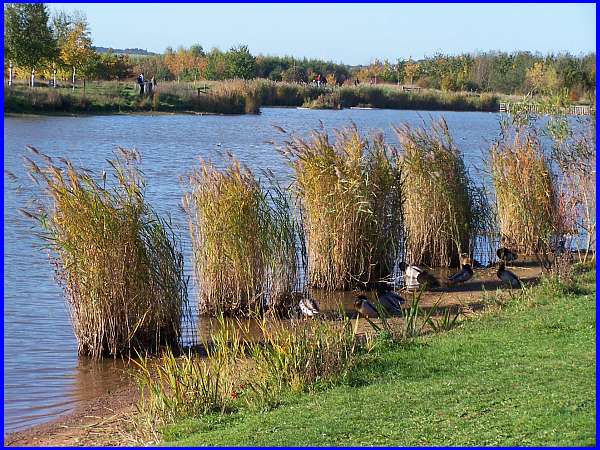
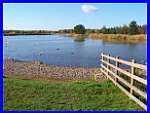 Although fairly new,
the lake has already become a valuable resource in the regeneration
process of the area and the reedbeds have become an important
habitat for many species of bird and insect life. In summer,
butterflies, dragon and damselflies are common and in the winter
months, the reeds provide a valuable refuge against predators
such as foxes, sparrowhawks and kestrels for the starlings and
reed buntings that roost at the top of the reeds. They have also
found favour with all manner of water birds as can be seen above.
I still didn't get those autumnal images I was after but the
visit to Rushcliffe Country Park was worthwhile nonetheless. Although fairly new,
the lake has already become a valuable resource in the regeneration
process of the area and the reedbeds have become an important
habitat for many species of bird and insect life. In summer,
butterflies, dragon and damselflies are common and in the winter
months, the reeds provide a valuable refuge against predators
such as foxes, sparrowhawks and kestrels for the starlings and
reed buntings that roost at the top of the reeds. They have also
found favour with all manner of water birds as can be seen above.
I still didn't get those autumnal images I was after but the
visit to Rushcliffe Country Park was worthwhile nonetheless.
|

